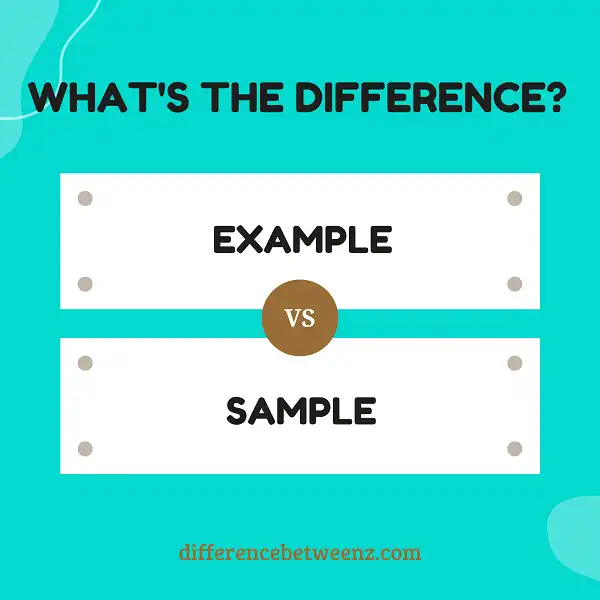When you are working on a project, it is important to use the correct word choice. Sometimes it can be difficult to know which word to use: “example” or “sample”. Both words have similar meanings, but they are used in different ways. In this blog post, we will explore the difference between these two words and provide examples of how each one should be used.
What is an Example?
When most people think of the word “example,” they think of something that is representative of a larger group. For instance, a common example of a mammal would be a dog.
However, the term “example” can also be used more narrowly to refer to a specific instance or piece of evidence that supports a claim or illustrates a point. For example, if someone were trying to prove that all mammals have fur, they might provide an example of a dog, which is a mammal with fur.
In this context, the term “example” refers to something that is not representative of the entire group but is still useful in illustrating the point. As such, the term can be used quite broadly and can be applied to many different situations.
What is a Sample?
In the context of research, a sample refers to a smaller, representative subset of a larger population. Sampling is the process of selecting a sample from a population.
- There are a variety of different sampling methods that researchers can use, and the most appropriate method will depend on the type of research being conducted and the resources available.
- Some common sampling methods include random sampling, stratified sampling, and systematic sampling. Once a sample has been selected, researchers can then collect data from the individuals in the sample and analyze this data to draw conclusions about the larger population.
- Samples are an essential tool in research because they allow researchers to study groups of people that would be too large or too diverse to study effectively in their entirety.
Difference between Example and Sample
Example and sample are two words that are often used interchangeably, but there is a subtle difference between the two.
- An example is a specific case that is used to illustrate a point.
- For instance, you might say “For example, I have three brothers and two sisters.”
- A sample, on the other hand, is a portion of something that is representative of the whole.
- For example, if you take a small sample of soil from a field, it will give you an idea of the composition of the entire field.
In summary, an example is A specific case used to illustrate a point, while a sample is A portion of something that is representative of the whole.
Conclusion
n business, it is important to be able to differentiate between an example and a sample. The terms are often confused, but there is a big difference between the two. An example is used to illustrate a point, while a sample is used for testing or comparison purposes. When you are giving examples in your marketing materials or during presentations, make sure that you are clear about which one you are using.
Samples can be helpful when trying to decide whether or not to buy a product. By providing samples of your products or services, you can give customers the opportunity to try them before they buy. This can help increase sales because customers will have a better idea of what they are getting into.


